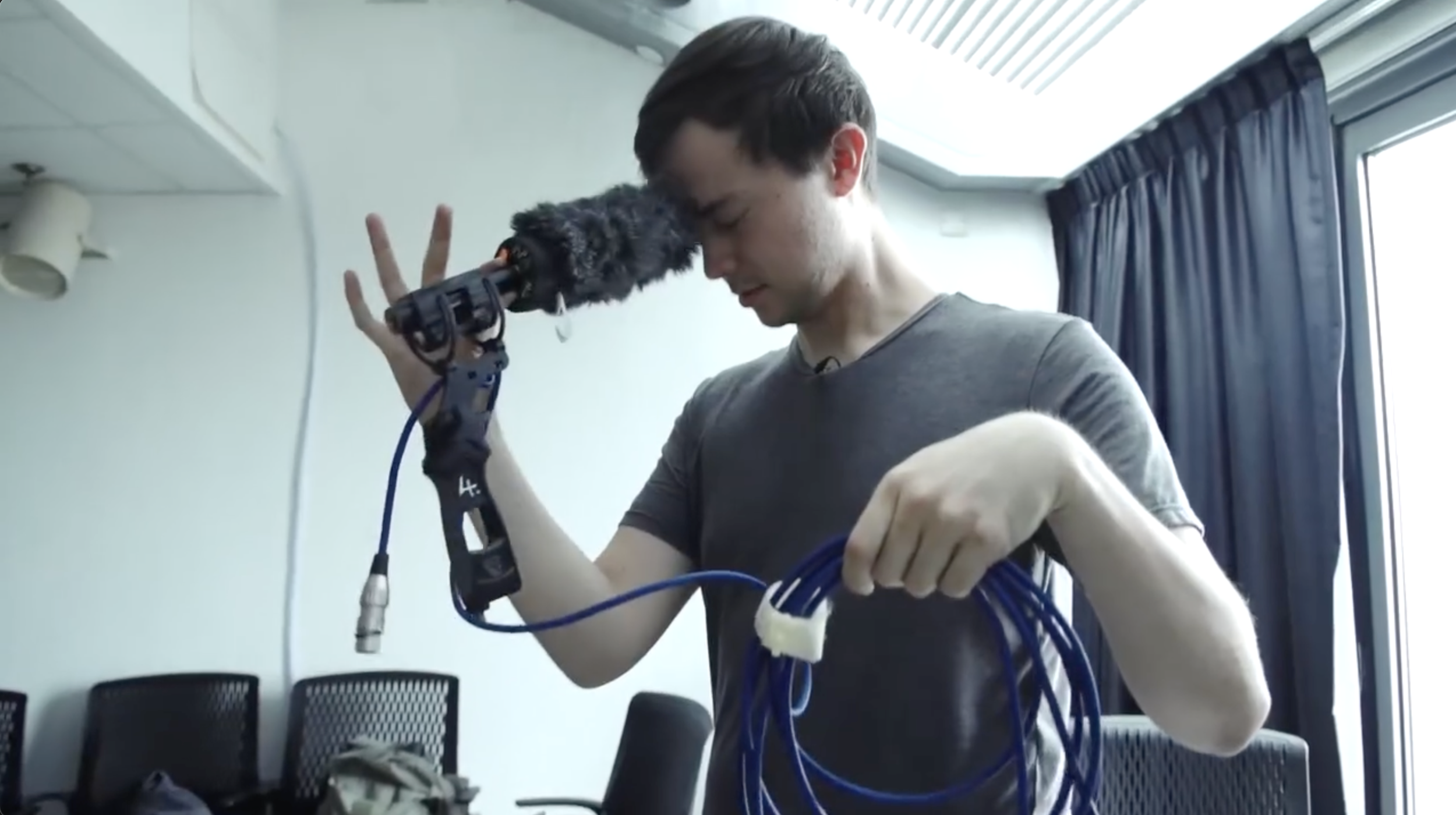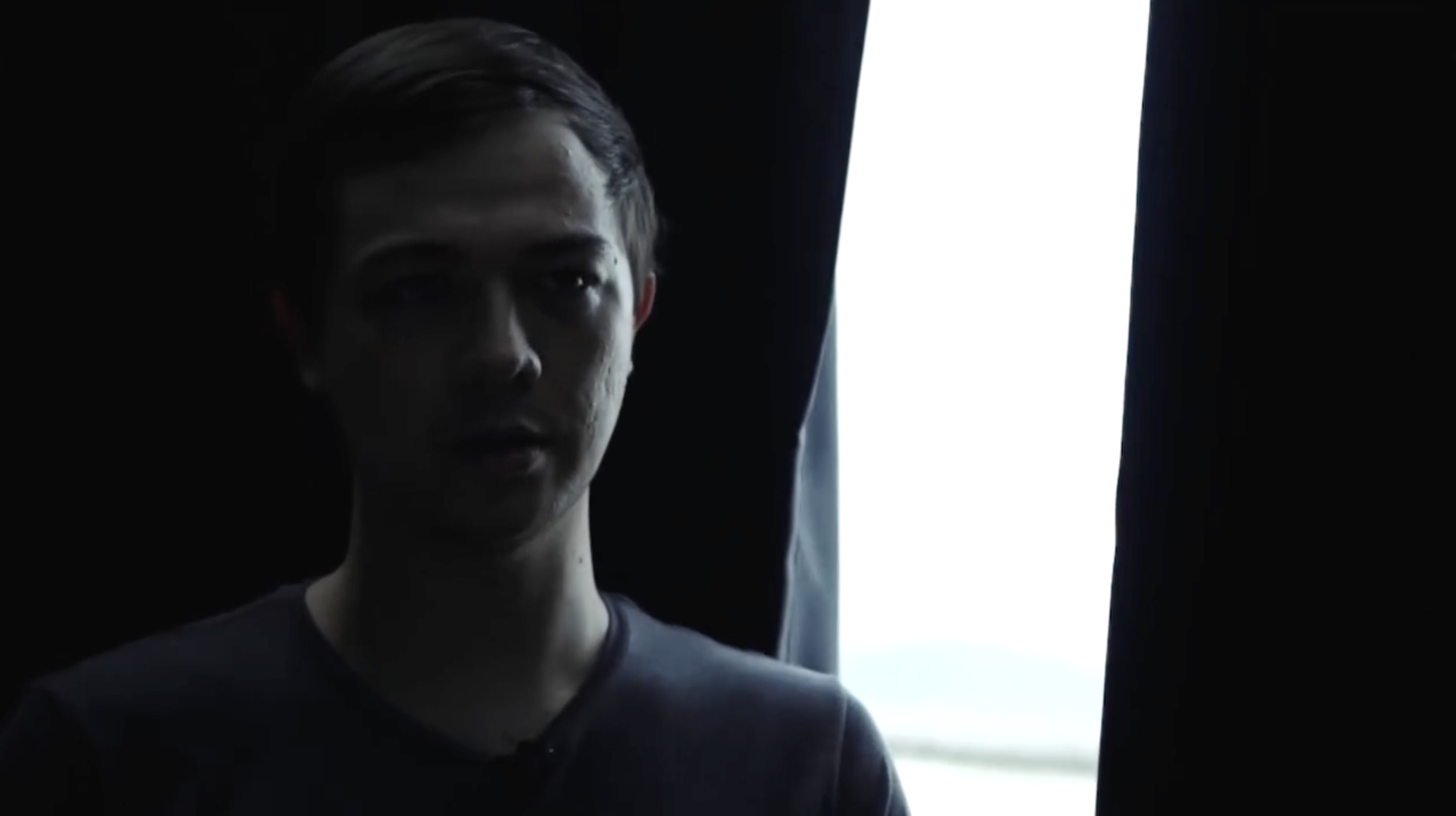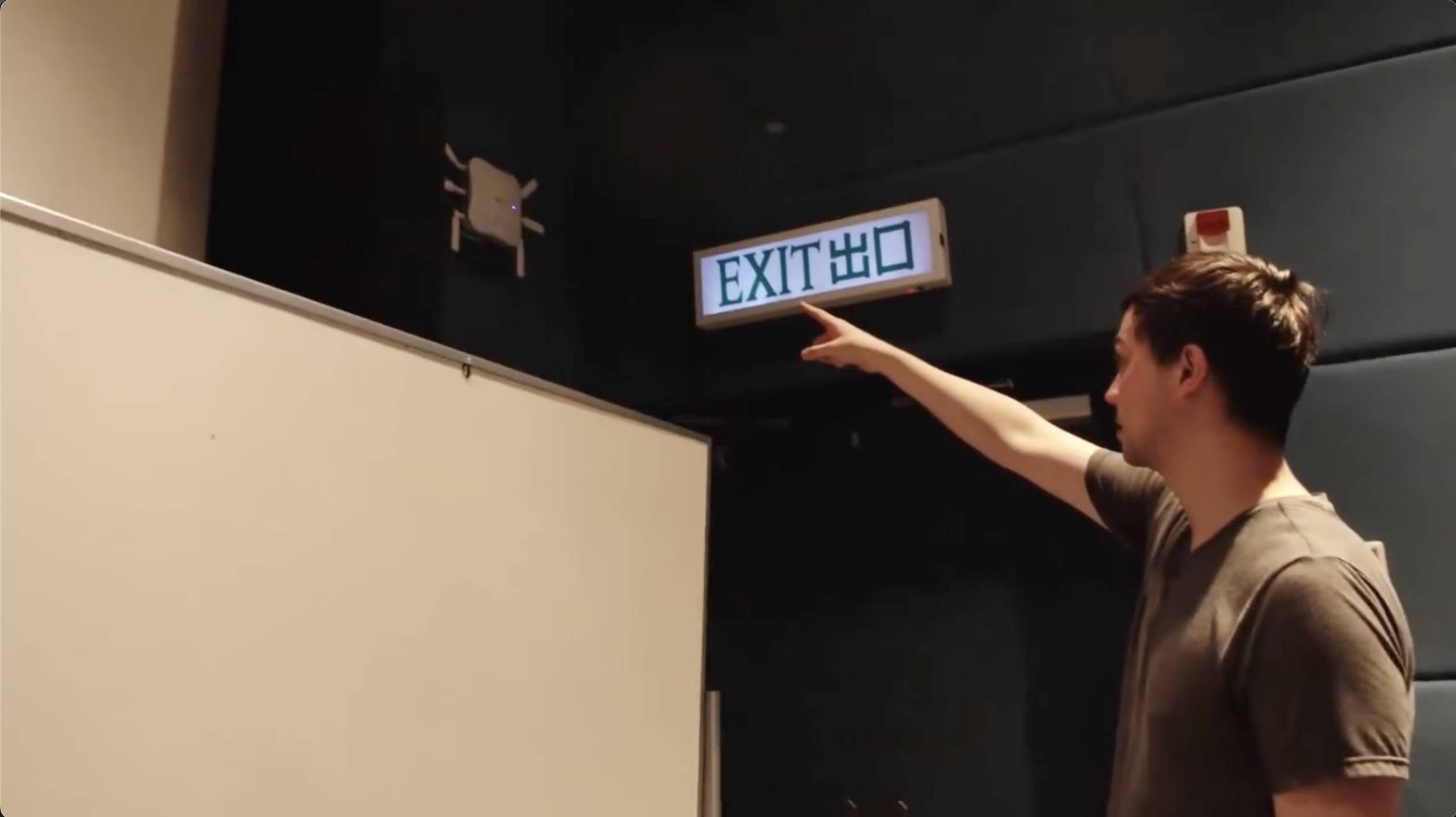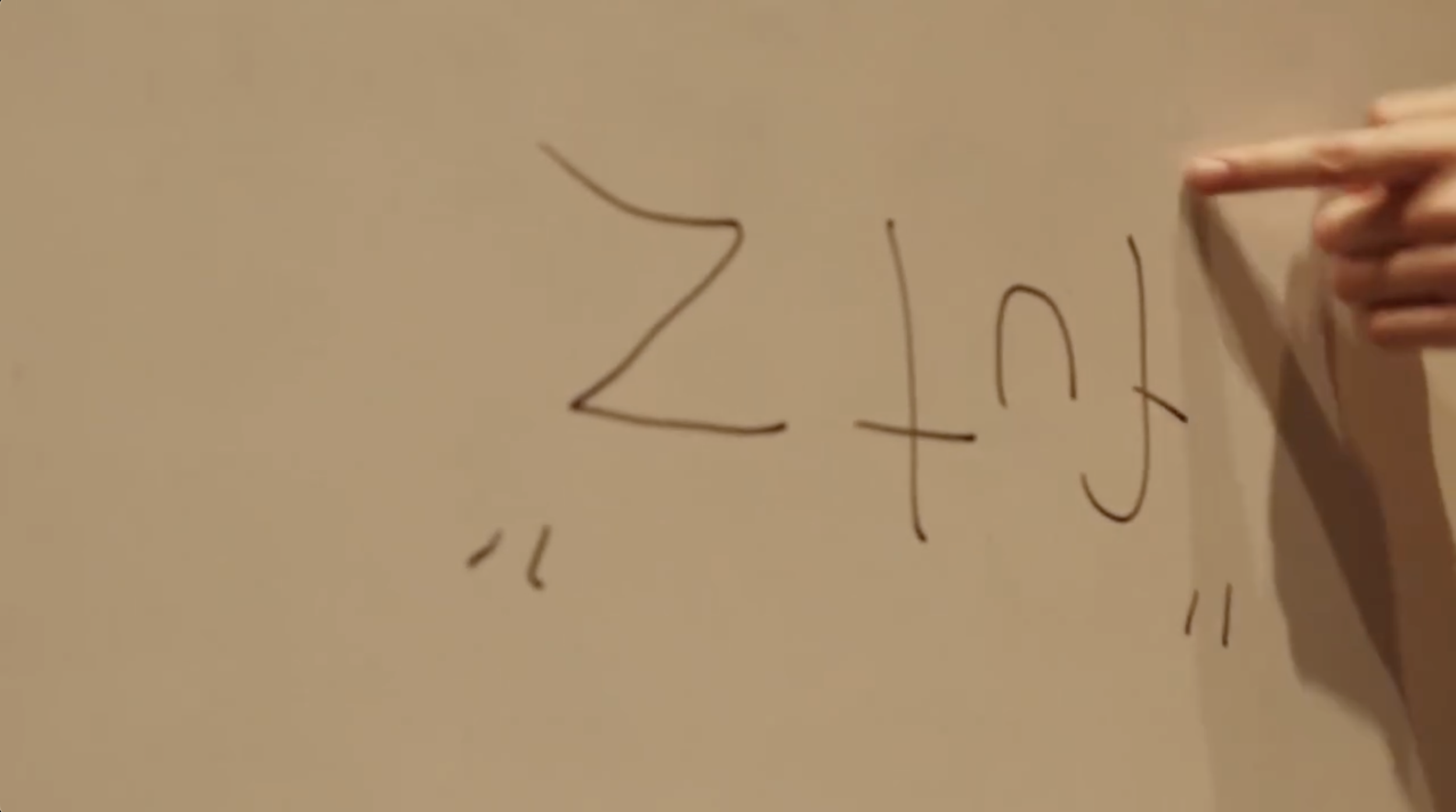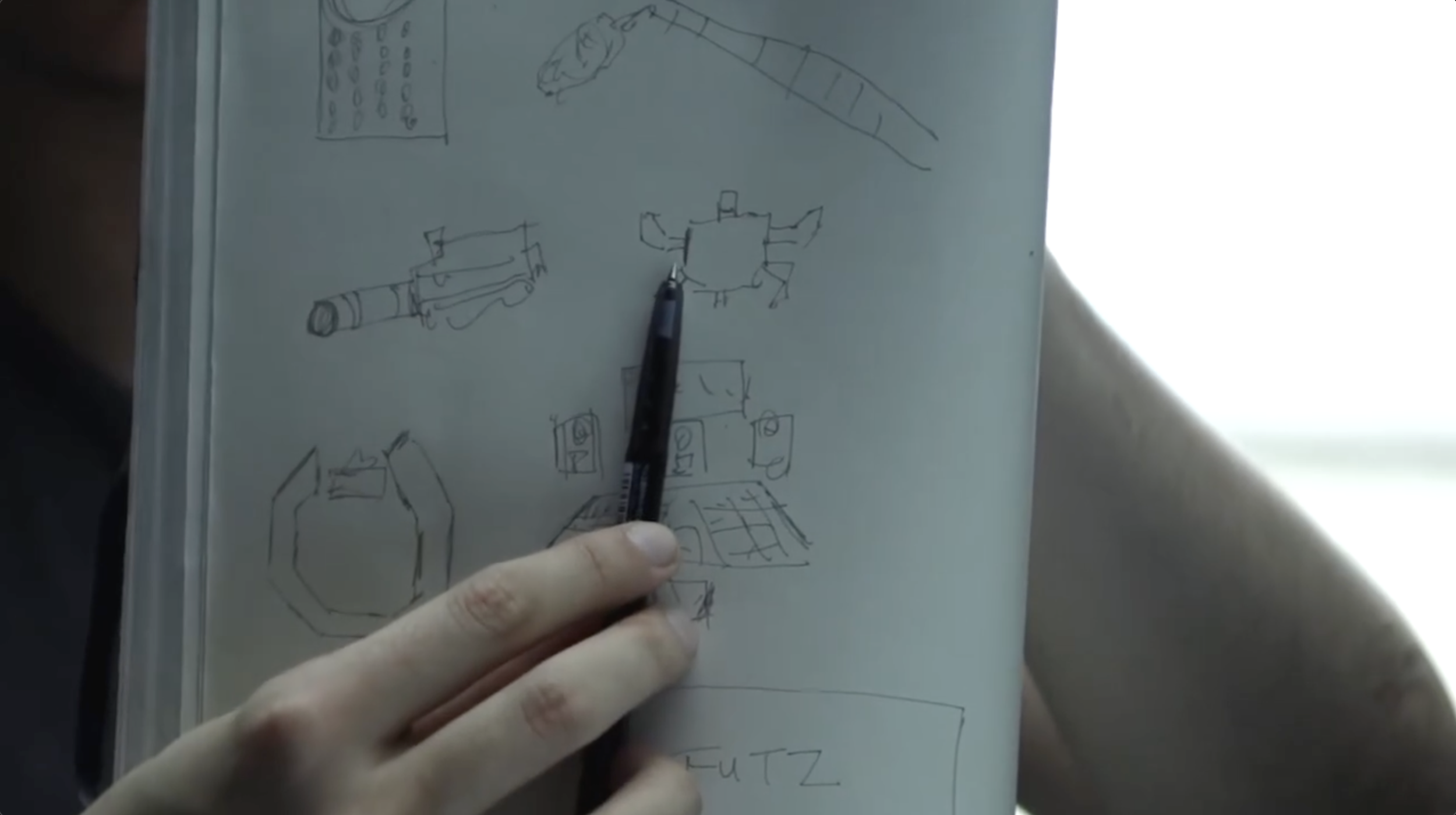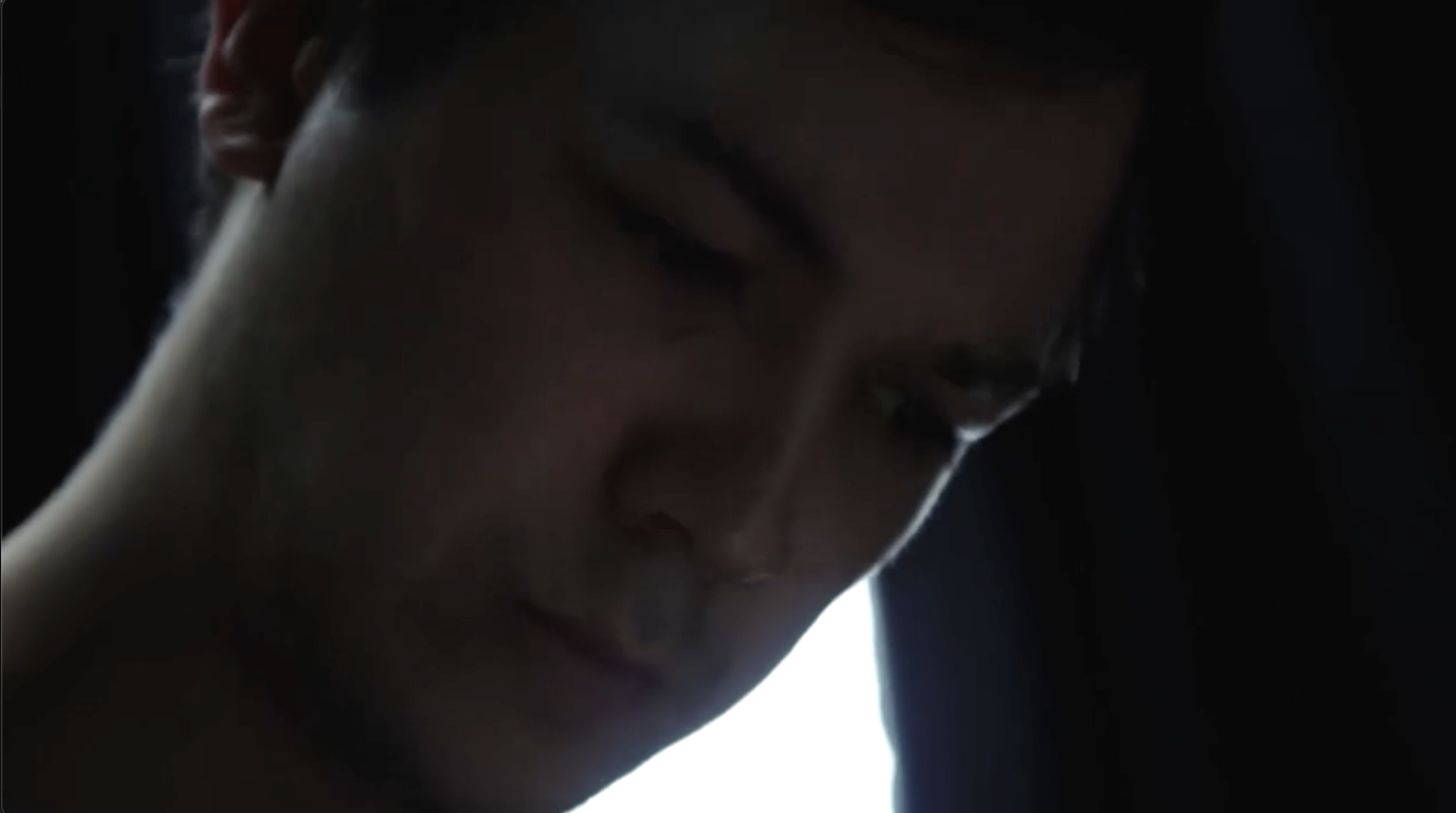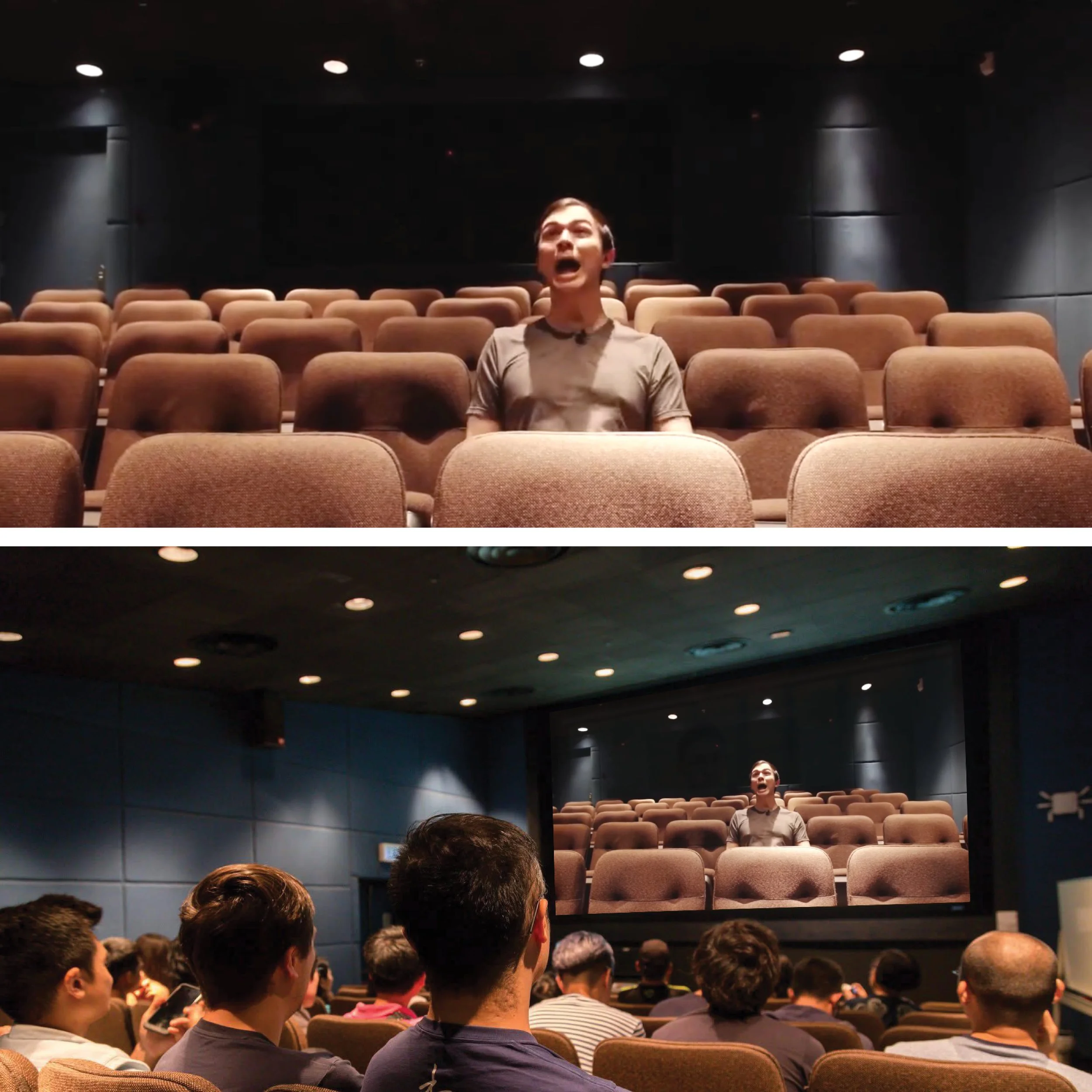
The Futz (2017)
2017, HD video with sound, 2 mins
The conventions of documentary practise – the interview, walk-and-talk and post-dramatisation – take centre stage in The Futz (2017). In this work, I explore the ingrained patterns of drama that work beneath the surface of non-fiction genre formats but nevertheless have a profound impact on society’s viewing of reality narratives. Documented by a film crew, my improvised performance reveals deeply held narrative patterns and techniques, which surfaced automatically during the act. I subconsciously used the crime genre as an anchor point for picking apart the forms structural elements, in which I contextualise the lecture halls I find myself in, as the setting of a cult.
Looking at these spontaneous creative choices, what’s interesting is that my own inner distrust of popular non-fiction genre devices emerges as a ridiculous mockumentary tonality, which in itself is another genre-wrapping that I become aware of and yet cannot seem to escape. How many walls need to be broken to be free of a prescribed lens?
The project was conceived and created during a class exercise in Hong Kong University’s Documentary Initiative, featuring Oscar-nominated documentary practitioners as lecturers, including Kirsten Johnson (Director / Cinematographer), James Longley (Director / Cinematographer), Dan Olmsted (Sound Designer). In the end, a logline was written for the performative piece: “A sound design technique known as The Futz becomes the centre of an unlikely cult in which followers worship an all-hearing sound man.” The film was screened at the same venue it was filmed in, watched by the same people appearing in the film – most of whom laughed out loud – which got me further questioning the meta boundaries of constructed narratives and reality and how I may explore and devise my own alternatives.
Photo: The Futz (2017). Taking a boom mic to the head repeatedly.
